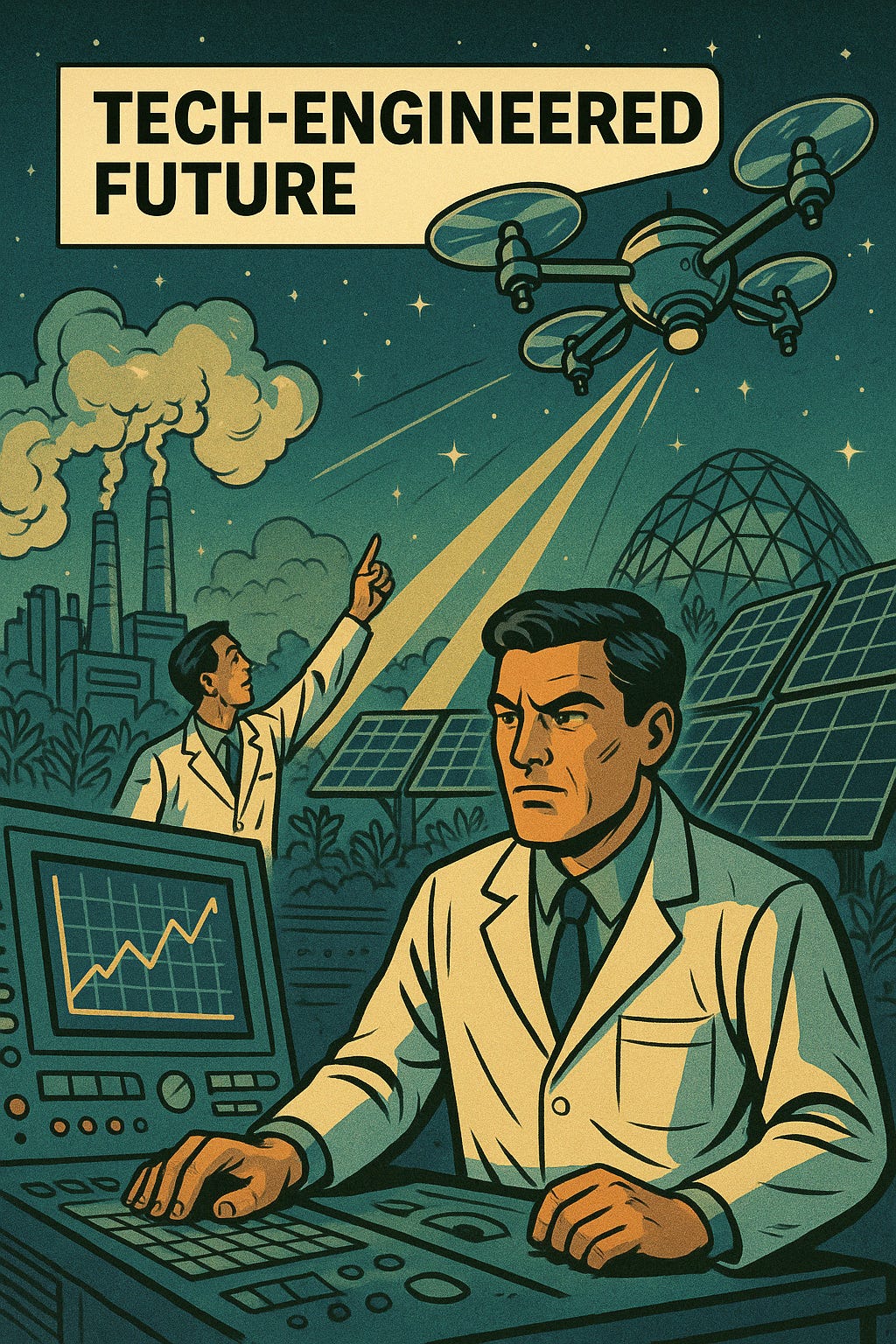Fire, Ice & Climate Control: Are We Engineering the End of the Ice Age?
DA Origins | Debut Feature
Introducing DA Origins
Exploring the mysteries of the past to illuminate the path ahead.
This is the first official installment of DA Origins, a Digital Articulation series dedicated to stories where history, myth, and science collide. Origins is where we look backward to look forward—unearthing ancient cycles, lost technologies, and forgotten knowledge to better understand the world we’re building today.

The Shock of Discovery
For most of my life, I thought the “Ice Age” was over. Sabretooths, mammoths, glaciers stretching across continents—that was ancient history. Then I stumbled across a fact that genuinely unsettled me:
We’re still in an ice age.
Not metaphorically. Not “kind of.” Officially.
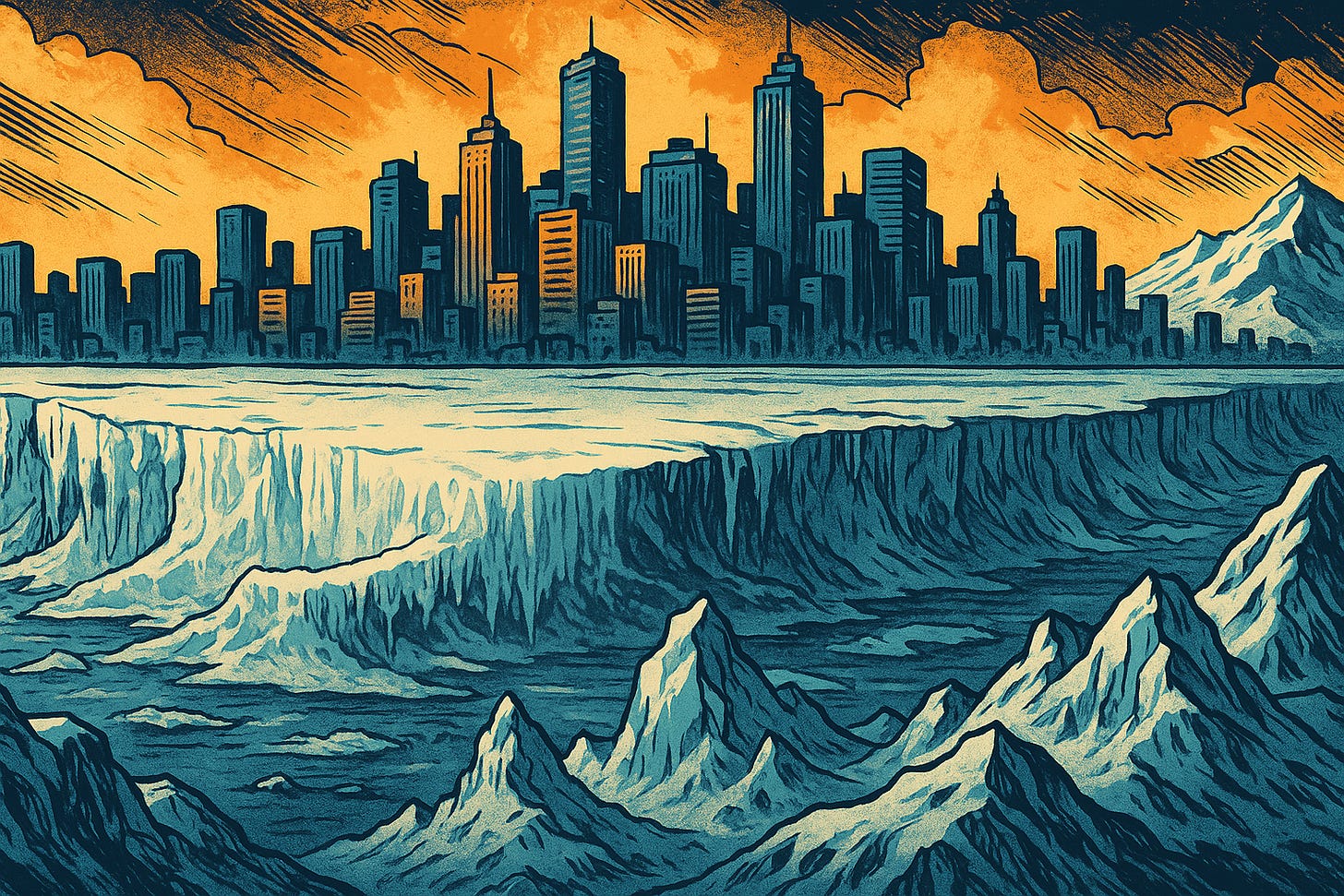
The polar ice sheets covering Greenland and Antarctica are the litmus test. As long as they exist, Earth is in what geologists call the Quaternary Ice Age, a cold era that began 2.6 million years ago. What we’re living in now, the Holocene, is simply a warm pause—an interglacial phase, not the end of the story.
That realization rattled me. I always assumed the Earth was naturally warming, moving on from its frozen past. But the truth is more complicated: the planet cycles in and out of deep freezes, and if left to its own devices, it would eventually grow cold again. Another ice age will come.
The unsettling part? If it returned tomorrow, the place I live would be buried or gone.
The Rhythm of Freeze and Thaw
Earth’s climate moves to a slow but powerful beat. Driven by orbital wobbles called Milankovitch cycles, the planet alternates between glacial periods—stretches of ~90,000 years where ice swallows continents—and warmer interglacials, short reprieves of 10,000–30,000 years.
To a geologist, these swings are gentle and predictable. To us, they’re apocalyptic.
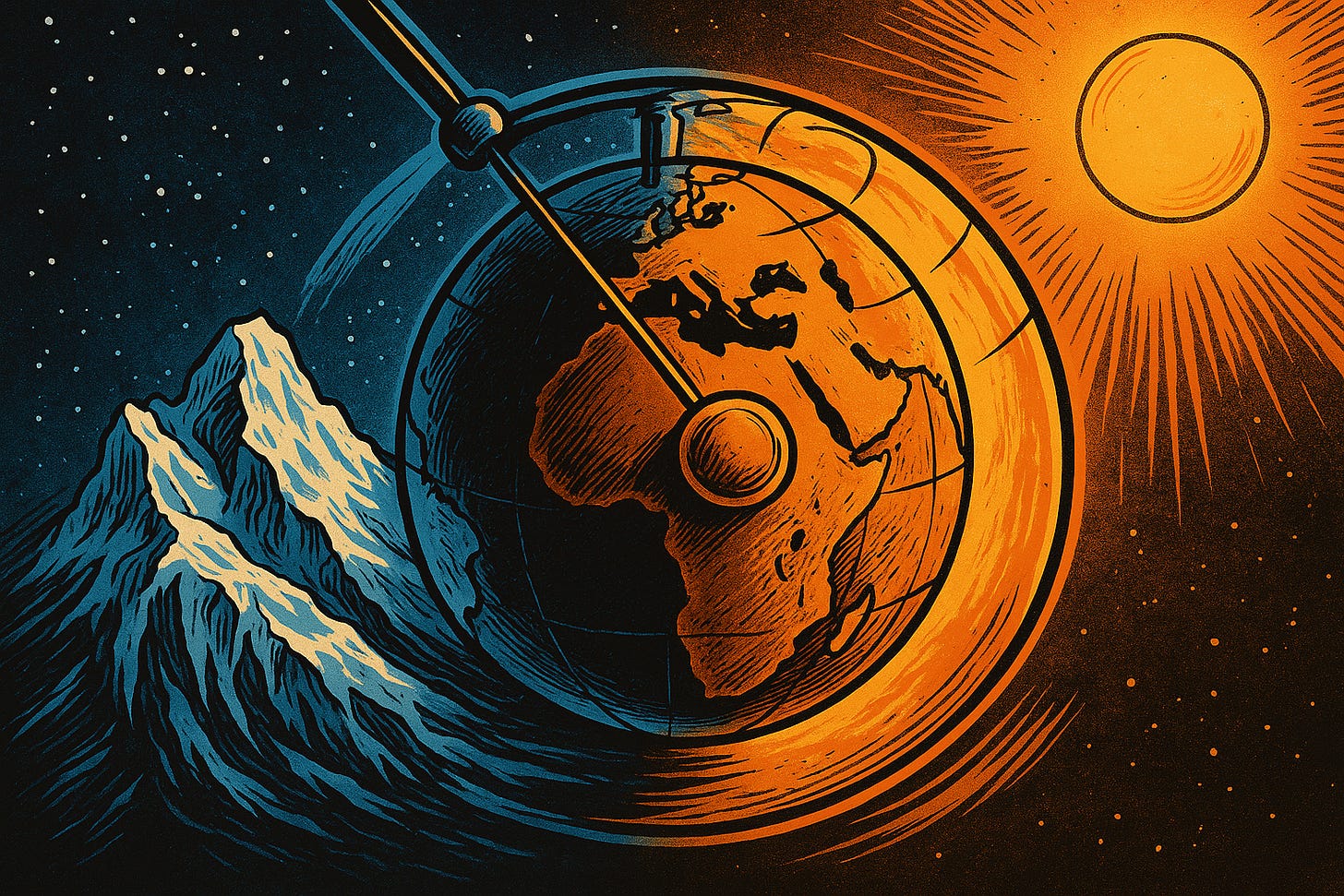
During glacial periods, sea levels plunge more than 100 meters, coastlines vanish, and northern latitudes become uninhabitable. During interglacials, like the Holocene, humans thrive. Agriculture blossoms. Cities rise. Civilizations bloom.
But history carries a warning: the warm window never lasts forever.
The Moment the Earth Stuttered
Just as the last ice age was ending, around 12,900 years ago, Earth threw a curveball. Temperatures plummeted again for about 1,200 years in a period now called the Younger Dryas.
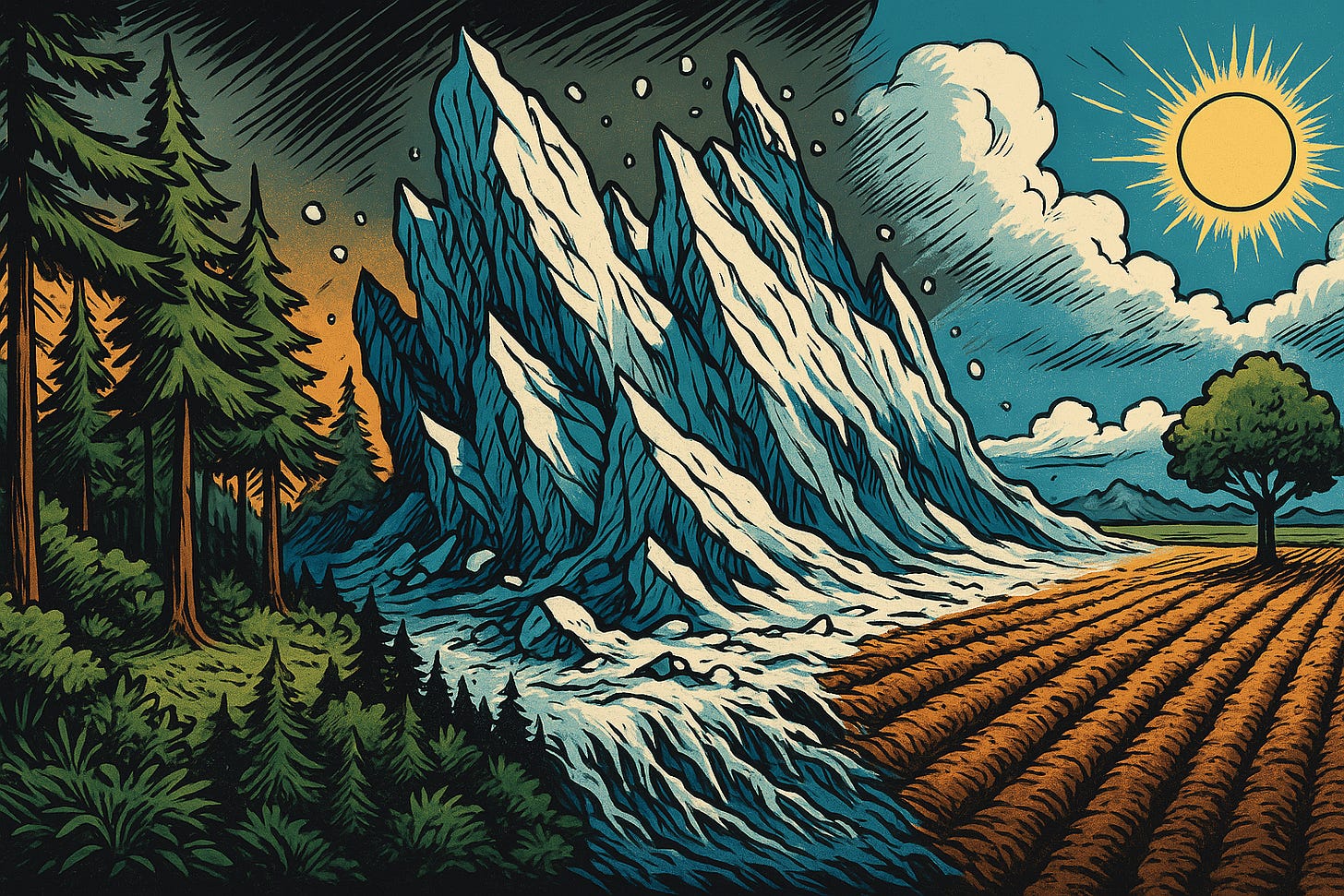
Imagine it: the ice was retreating, forests expanding, game animals returning—and suddenly, the cold roared back. Glaciers re-advanced. Winters deepened. Ecosystems shrank. And then, almost as abruptly, warmth snapped back, ushering in the Holocene.
What caused this climatic stutter remains one of Earth’s great mysteries. Some scientists point to massive floods of glacial meltwater disrupting the Atlantic currents that carry warmth north. Others argue for a comet impact igniting wildfires and choking the skies. Still others think volcanic feedbacks tripped a fragile system.
Whatever the cause, the Younger Dryas is proof that climate can shift with terrifying speed. It also shows how fragile the “stable” conditions we take for granted really are.
Natural Doesn’t Mean Harmless
Scientists often describe these cycles as “gradual.” And yes, measured against the span of geologic time, they are. But for us, the consequences would be catastrophic.
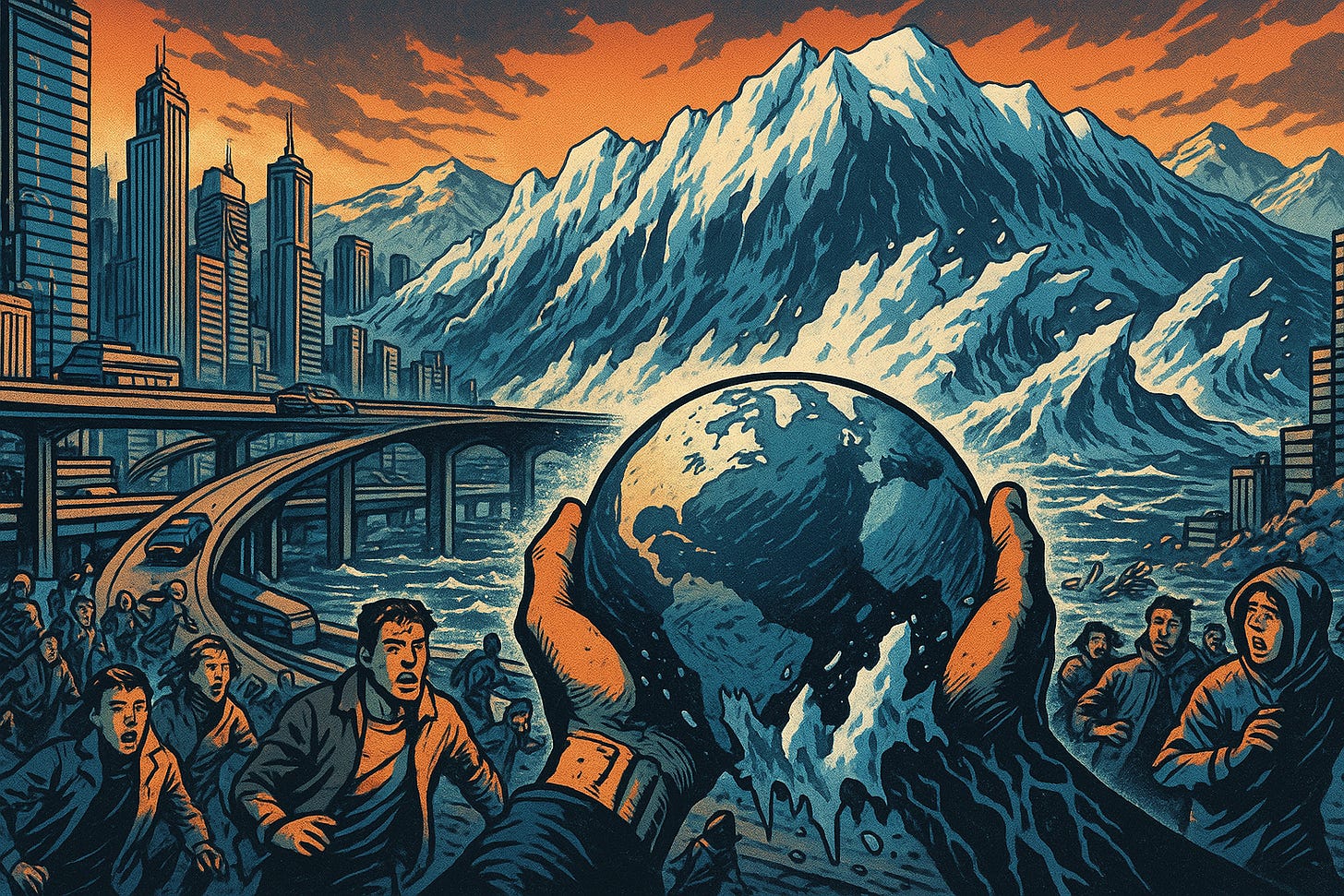
Another ice age wouldn’t be a scientific curiosity—it would be a slow-motion disaster.
Sea levels would drop, collapsing ports and flooding rivers.
Fertile farmlands in North America and Europe would vanish under ice sheets.
Habitability would shrink, forcing hundreds of millions to migrate south.
Conflict would flare as nations fought for resources and survival.
Geologists call these cycles “natural.” But natural doesn’t mean safe. It means inescapable—unless we intervene.
Sidebar: Atlantis and the Younger Dryas
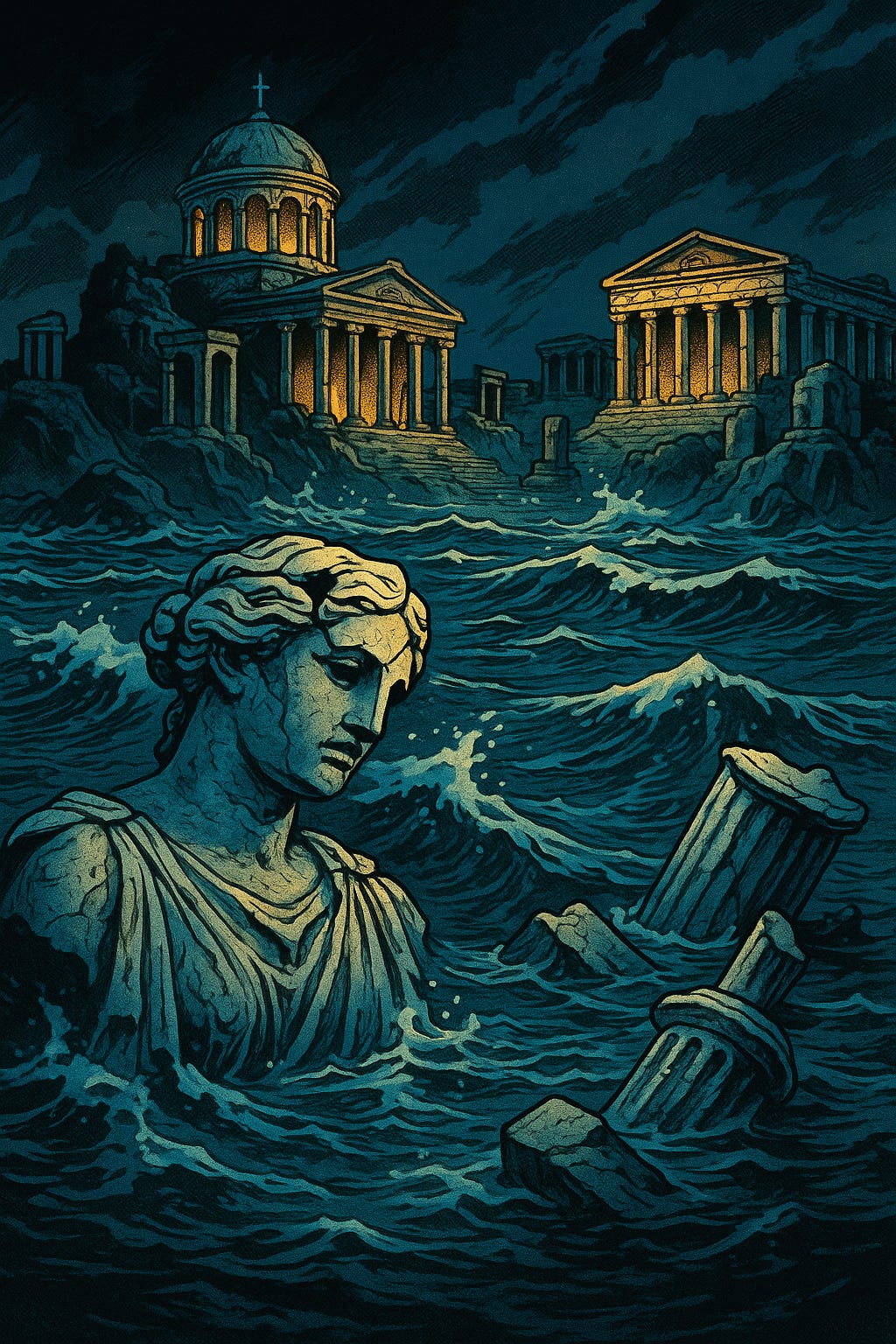
Plato’s story of Atlantis describes a great civilization lost to the sea around 9,600 BCE—eerily close to the timing of the Younger Dryas and the dawn of the Holocene.
Historians debate whether Atlantis was allegory, propaganda, or memory of a real place. But the overlap is striking: just as Plato describes a sudden flood, the end of the Younger Dryas brought violent sea level rise—as much as 120 meters over a few thousand years—reshaping coastlines and drowning entire landscapes.
Atlantis may not have been a literal city beneath the waves, but the myth echoes a deeper truth: when Earth’s climate shifts, entire worlds can vanish. And sometimes, memory survives not as history, but as legend.
The Choice in Our Hands
For millions of years, Earth has obeyed its cycles of fire and ice. But for the first time, humans have broken the pattern.
By pumping greenhouse gases into the sky, we’ve trapped more heat than the natural rhythm allows. Instead of slowly cooling into the next ice age, Earth is warming. Some scientists argue we may have already canceled the next glacial cycle entirely.
That means we’re standing at a fork in the road. One path is business as usual, where temperatures rise 3–5°C, seas consume cities, and ecosystems collapse. Another path is a geoengineered future, where we wield technology to capture carbon, brighten clouds, or even reflect sunlight away. A third, less likely path is to let Earth cool naturally again, to surrender to the next great ice.
None of these futures are comfortable. But one thing is clear: we are no longer passengers in Earth’s cycles. We’re drivers.
Technology’s Double Edge
Our tools are astonishing. Direct air capture plants already exist. AI models simulate future climate shifts. Geoengineering proposals—from spraying aerosols into the stratosphere to seeding reflective particles in the ocean—are being tested.
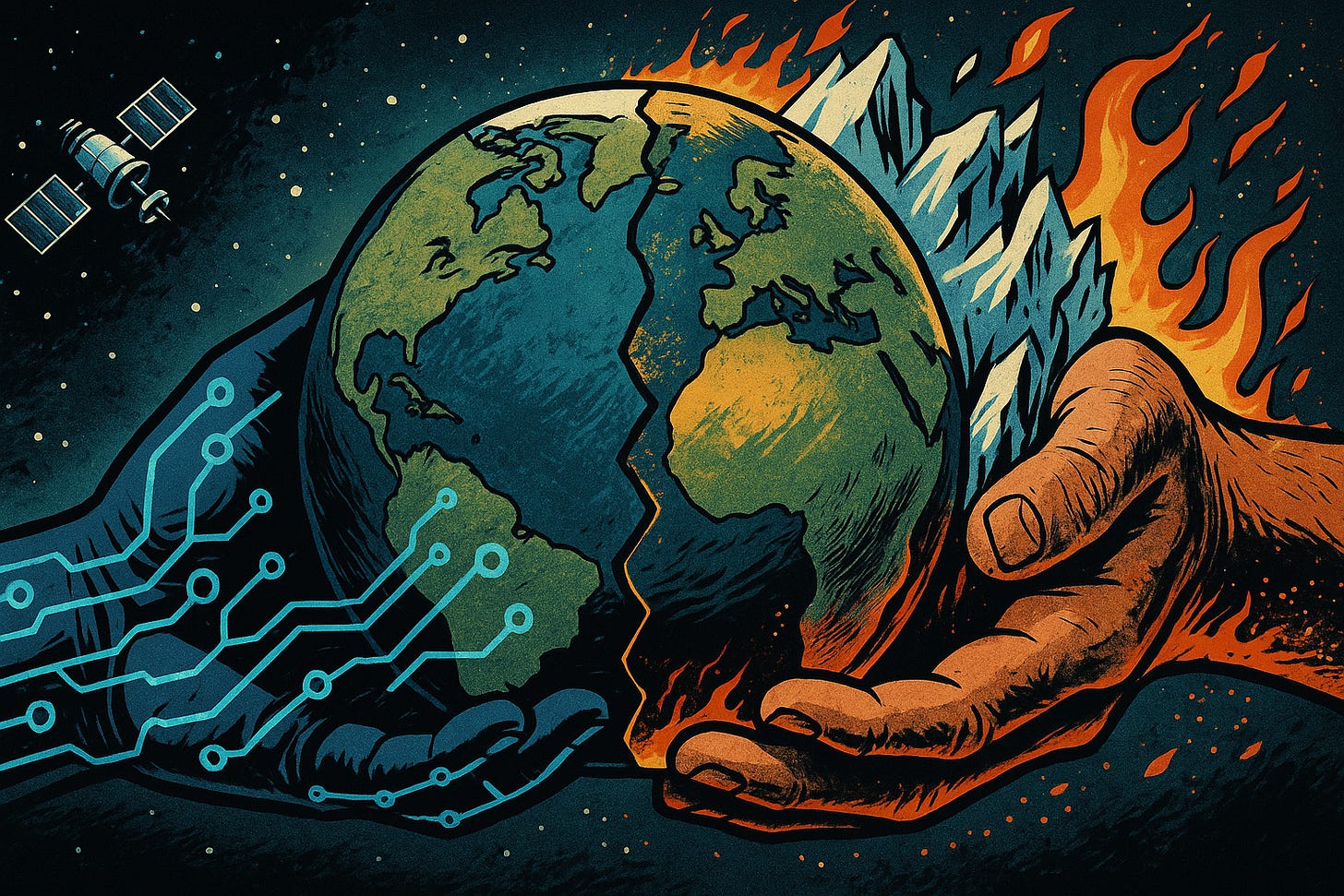
Technology could stabilize the Holocene, preserving the warmth that birthed civilization. Or it could backfire, deepening inequalities, sparking conflict, or triggering new disasters.
The unsettling reality is this: Earth’s climate will change. The only question is whether it changes because of orbital tilts and ocean currents—or because we chose to reengineer it.
Origins Reflection
The discovery that we’re still in an ice age, waiting on borrowed time, should unsettle us. The knowledge that another glaciation will come—whether in 10,000 years or 100,000—is hard to wrap our minds around.
But this is why Origins exists. To remind us that the past is not dead. That myths, science, and cycles all whisper the same warning: climate shifts are not gentle. They are world-ending. And they are world-beginning.

We may not see the next ice age, but our fingerprints are already shaping the rhythm of fire and ice. For the first time in history, humans are not just survivors of climate cycles. We are their authors.
This is the debut of DA Origins. The first of many stories where past wisdom meets future innovation—and where the choices we make today determine whether civilizations endure, or become tomorrow’s Atlantis.


